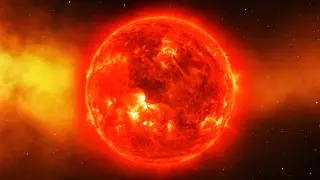Tengrinews.kz - A powerful X-class solar flare erupted on the eastern edge of the Sun on the morning of October 24. The peak of the flare was recorded at 06:57 Moscow time, according to the Laboratory of Solar Astronomy at IKI and ISZF.
Scientists classified the flare as X3.3 in terms of X-ray emission, making it the 11th most intense flare since the beginning of the 25th solar cycle, which started in 2018.
"The active region where the explosion was recorded corresponds to sunspot group 3842, which is returning to the Earth-facing side of the Sun. This group produced the largest flare of this solar cycle—an X9.0 flare—on October 3. As the Sun takes 27 days to complete one rotation, regions that move out of view over the western edge have a chance of returning to face Earth in 13-14 days. This is rare, but it seems to be happening in this case, and we will be observing this sunspot group again over the next two weeks," the laboratory noted.
Since part of the active region remains hidden behind the Sun’s edge, some of the flare's energy may have been blocked by the solar disk. As a result, the actual power of the flare could be higher than estimated, but this cannot be determined precisely.
Larger sunspots in this group might also be hidden beyond the Sun's edge and could become visible from Earth in the next 1-2 days.
"The flare was accompanied by a massive ejection of solar material, but given the positioning of the active region, the mass ejection moved sideways and partially backward, away from Earth, meaning it won't affect the planet," the experts concluded.
The active solar region is expected to move into a position that could influence Earth over the coming weekend. By then, scientists will be able to assess any changes in the region over the past two weeks and evaluate potential risks.


